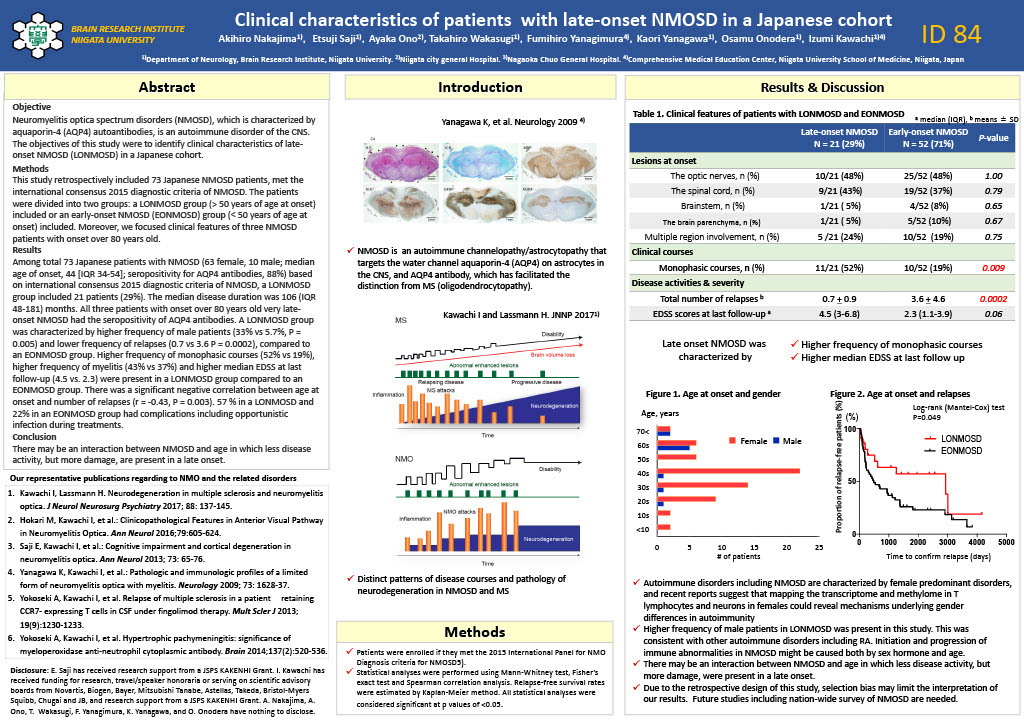Clinical characteristics of patients with late-onset NMOSD in a Japanese cohort
Abstract
Objective:
Neuromyelitis optica spectrum disorders (NMOSD), which is characterized by aquaporin-4 (AQP4) autoantibodies, is an autoimmune disorder of the CNS. The objectives of this study were to identify clinical characteristics of late-onset NMOSD (LONMOSD) in a Japanese cohort.
Methods:
This study retrospectively included 73 Japanese NMOSD patients, met the international consensus 2015 diagnostic criteria of NMOSD. The patients were divided into two groups: a LONMOSD group (> 50 years of age at onset) included or an early-onset NMOSD (EONMOSD) group (< 50 years of age at onset) included. Moreover, we focused clinical features of three NMOSD patients with onset over 80 years old.
Results:
Among total 73 Japanese patients with NMOSD (63 female, 10 male; median age of onset, 44 [IQR 34-54]; seropositivity for AQP4 antibodies, 88%) based on international consensus 2015 diagnostic criteria of NMOSD, a LONMOSD group included 21 patients (29%). The median disease duration was 106 (IQR 48-181) months. All three patients with onset over 80 years old very late-onset NMOSD had the seropositivity of AQP4 antibodies. A
LONMOSD group was characterized by higher frequency of male patients (33% vs 5.7%, P = 0.005) and lower frequency of relapses (0.7 vs 3.6 P = 0.0002), compared to an EONMOSD group. Higher frequency of monophasic courses (52% vs 19%), higher frequency of myelitis (43% vs 37%) and higher median EDSS at last follow-up (4.5 vs. 2.3) were present in a LONMOSD group compared to an EONMOSD group. There was a significant negative correlation between age at onset and number of relapses (r = -0.43, P = 0.003). 57 % in a LONMOSD and 22% in an EONMOSD group had complications including opportunistic infection during treatments.
Conclusion:
There may be an interaction between NMOSD and age in which less disease activity, but more damage, are present in a late onset.

